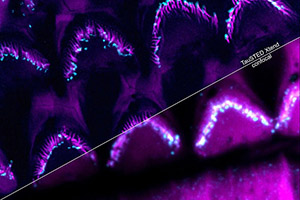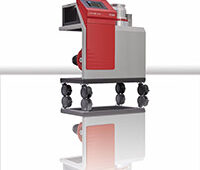Leica Microsystems, a maker of microscopy and scientific instrumentation, introduces TauSTED Xtend, a new STED microscopy approach that enables extended multicolor live cell imaging at nanoscopic resolution. By combining spatial and lifetime information, TauSTED Xtend resolves details of live or intact specimens at nanoscale. At the same time, access to that extra level of information allows working at extremely low light doses. This gives scientists more time to perform in-depth studies of biological processes with cutting-edge resolution capabilities.

The new STED microscopy approach, TauSTED Xtend, enables extended multicolor imaging of live and intact specimen at nanoscale. By combining spatial and lifetime information, TauSTED Xtend gives access to an extra level of information that allows resolving small details in context at extremely low light dose.
“TauSTED Xtend ensures that live cell experiments can be carried out over a longer time span thanks to the balance of light exposure and resolution which leads to gentler imaging at stunning nanoscale depths,” said James O’Brien, VP of Life Sciences and Applied Solutions at Leica Microsystems. “Researchers can now reveal the invisible in unexplored areas of research.”
TauSTED Xtend works on the fly, allowing researchers to directly monitor fast biological processes at nanoscale resolution. They can therefore make the most of their experimental window by seeing what happens as it happens.
“TauSTED Xtend offers new opportunities for single and multi-color experiments with green fluorescent proteins and fluorophores that are a workhorse in life science research and currently underused in nanoscopy studies,” said Ulf Schwarz, application manager Confocal Microscopy at Leica Microsystems. “Scientists can now effectively scale their experiment down to the nanoscale using familiar protocols and a wide range of fluorescent labels and markers commonly used in biological research.”
TauSTED Xtend is the next step in the evolution of stimulated emission depletion (STED) imaging, offering extended live-cell imaging times at the cutting edge of nanoscale resolution. Leica developed the proprietary TauSTED approach in 2019, leveraging FLIM and lifetime-based technologies to improve image quality and increase image resolution.
In combination with the Leica STELLARIS 8 FALCON FLIM Microscope, it is now possible to perform multi-fluorophore STED imaging with lifetime-based species separation.
For more information on TauSTED Xtend, read the application note here.





Hair cell of the ear. I used to work in a lab that studied hearing research. Nice picture.